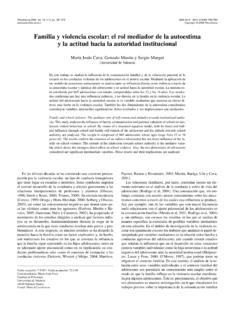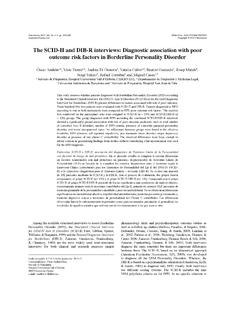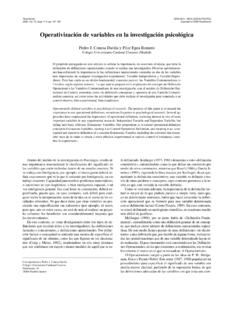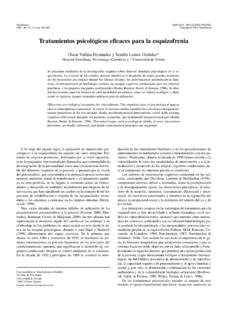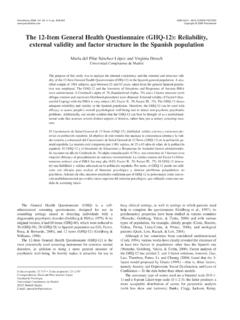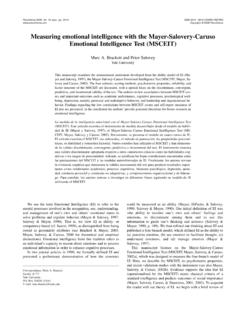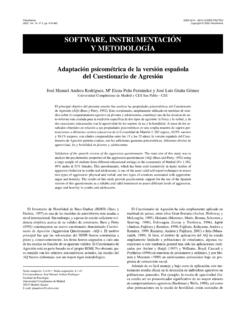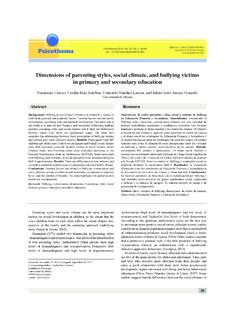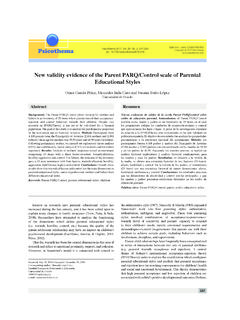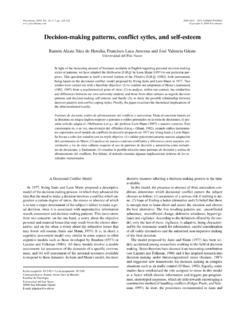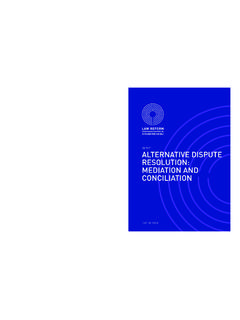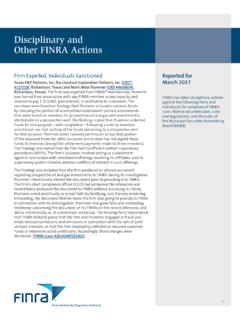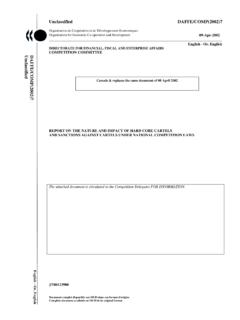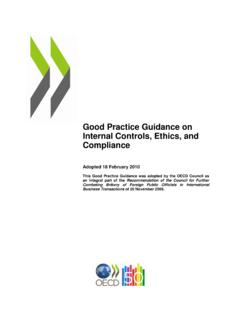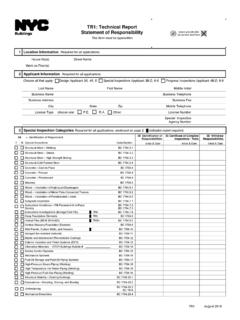Transcription of The effects of custodial vs non-custodial sanctions on ...
1 The authors have just finalised a systematic review on theeffects on re-offending of custodial and non- custodial ( alternative ) sanctions (Villettaz, Killias, & Zoder, 2006). Sincethe mid-19thcentury, it was common knowledge, if not a dogma,that short-term imprisonment is damaging because, in the wordsfirst coined by Bonneville de Marsangy and later copied by vonLiszt and many others, incarceration for shorter periods does notlast long enough to cure criminal propensities (seen as a kind ofa disease), but still too long to avoid first-time offenders to beexposed to the risk of contamination by hard-core criminals(Kuhn, 2000).
2 Based on this quasi-medical theory of criminalcontamination, von Liszt and many others ever since havestimulated the development of sanctions that do not imply custody,such as suspended sentences, probation, fines and later communitywork and electronic monitoring. Simultaneously and ratherironically, the same movement has also stimulated long-termincarceration and even incapacitation for offenders considered assufficiently sick to warrant long-term cures in these trends have been stimulated by the idea to offer better alternatives to custody, to reduce re-offending through moreefficient alternative sanctions .
3 Many such programs have beenevaluated over the last decades world-wide, usually with resultsthat confirmed the superiority of non- custodial over custodialsanctions. Keeping these backgrounds in mind, the CampbellCollaboration Crime and Justice Groupinvited the authors to starta systematic review of the evidence on whether or not custodial ornon- custodial sanctions are more effective in preventing re-offending. This essay will give a resume of the methods andresults of this meta-analysis. We shall conclude with an overviewon how future evaluations of new sanctions and programmescould be made more effects of custodial vs non- custodial sanctions on reoffending:Lessons from a systematic reviewMartin Killias and Patrice VilletazUniversity of Lausanne (Switzerland)Based on a systematic review of some 23 (out of 300 originally located) studies, it is concluded thatmost studies show lower rates of re-offending following a non- custodial compared to a custodial sanc-tion.
4 However, this outcome may be biased because, in most quasi-experiments of this kind, subjectswith the worst prospects of rehabilitation are likely to be sent to prison. In a meta-analysis limited tofive randomised controlled trials and one natural experiment, it is concluded that custodial and non- custodial sanctions do not differ significantly in terms of re-offending. Lessons from this review in-clude, in view of future evaluations, the need to increase randomised controlled trials, to use broadermeasures of re-offending and rehabilitation, to look at long-term effects , and to deal with possibleHawthorn effects .
5 Equal rates of re-offending do not mean that nothing works or nothing matters ,but that criminal justice policies should not be based on the belief that short-term confinement will efectos de las penas privativas vs no privativas de libertad en la reincidencia: lecciones de una re-visi n sistem una revisi n sistem tica de 23 estudios se concluye que la mayor a de las in-vestigaciones muestra una tasa m s baja en la reincidencia de los delincuentes condenados a cumpliruna condena alternativa a la prisi n, comparados con los que son condenados a penas de reclusi n.
6 Noobstante, esta estimaci n puede estar sesgada, debido al hecho de que los sujetos que tienen el peorpron stico de rehabilitaci n son los que suelen ingresar en prisi n. En un meta-an lisis que realizamosde cinco estudios que inclu an dise os experimentales con asignaci n al azar, m s un experimento na-tural, obtuvimos el resultado de que las condenas de reclusi n y las penas alternativas no difieren demodo significativo en cuanto a la reincidencia. El art culo a continuaci n deriva algunas conclusionesde la investigaci n, entre las cuales se citan las siguientes: la necesidad de aumentar el n mero de ex-perimentos con asignaci n al azar, emplear medidas m s inclusivas de la reincidencia y la rehabilita-ci n, y estudiar los efectos de las sanciones a m s largo plazo.
7 Que se obtengan tasas iguales de rein-cidencia no significa que nada funciona , sino que la pol tica criminal no deber a asumir que,necesariamente, la reclusi n breve en la c rcel tendr efectos negativos en el recepci n: 19-6-07 Fecha aceptaci n: 11-9-07 Correspondencia: Martin KilliasEcole des Sciences CriminellesUniversity of LausanneCH-1015 Lausanne (Switzerland)E-mail: 2008. Vol. 20, n 1, pp. 29-34 ISSN 0214 - 9915 CODEN 2008 PsicothemaMethodWhat is custodial ? What is non- custodial ?According to the protocol, the systematic review was to includeworld-wide published or unpublished studies conducted between1961 and 2002 where some form of non- custodial sanction hasbeen compared, in terms of re-offending, with custodial sanctions .
8 For pragmatic reasons, sanctions were considered custodial whenever they were imposed by a judge, as a form ofpunishment (with or without treatment ), thus excluding pre-trialdetention and arrest policies ( in connection with domesticviolence), and whenever they implied some form of confinementin a closed residential setting. sanctions were considered non- custodial whenever they did not imply deprivation of to our pragmatic definition, boot camps or sentencesimplying deprivation of liberty in a closed therapeutic setting havebeen considered as custodial , whereas community work,electronic monitoring, financial or suspended sanctions (probation) have been considered as alternative or non- custodial .
9 Given the large international differences in crimepolicies, but also changes since the 1960ies in character andtypologies of prisons and other sanctions , we are aware of somedifficulties in this respect. Practically, however, we guess that thenumber of studies on sanctions at the margin of what one mightconsider custodial or not was not particularly large. Moreserious was the heterogeneity of alternative sanctions , since thisconcept included sanctions as different as community service,probation, fines and electronic monitoring.
10 The only commondenominator was that all these sanctions did not involvedeprivation of liberty. We are aware that this is a questionablecategory. On the other hand, it is certainly not irrelevant forassessing the claim that confinement is damaging per se. Finally,the duration of custody and alternative sanctions can varyconsiderably, whereas virtually all studies included compared any alternative to rather short prison terms. Again, this is not aproblem in a context where the century-old claim has always beenthat short-term confinement is damaging.
